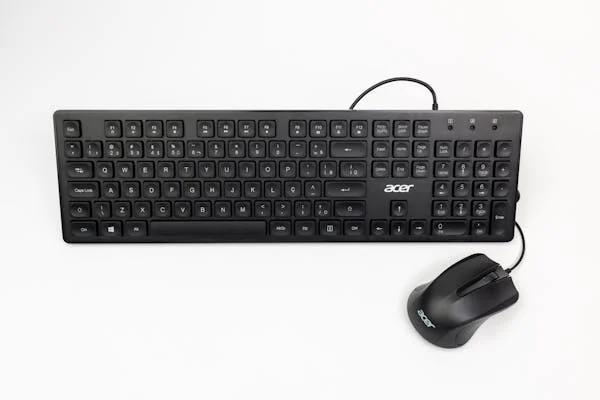
Table of Contents
ToggleBoost Work from Home Productivity with Ergonomic Solutions: 7 Proven Tips
Working from home offers flexibility, comfort, and autonomy, but many workers struggle with decreased productivity and physical discomfort due to poorly designed setups. If you’re looking to boost work from home productivity with ergonomic solutions, this article will help you optimize your workspace for comfort and efficiency.
From selecting the right chair and desk to using helpful accessories, ergonomic solutions can prevent common issues like back pain and eye strain. Simple adjustments can lead to a more comfortable, focused workspace, enabling you to work efficiently and without discomfort for longer hours.
Introduction to Work from Home Challenges
Rise of Remote Work
n recent years, remote work has grown in popularity, with more businesses adopting virtual work environments. The pandemic played a key role in this shift, but the ongoing benefits of remote work—like flexibility, fewer distractions, and no long commutes—have made it a long-term option for many employees. While remote work offers clear advantages, it also brings unique challenges that can affect productivity.
One major issue is the lack of structure that comes with working outside of a traditional office. Without the physical boundaries of an office, many workers find it difficult to manage their time effectively and stay focused on tasks. Additionally, home-based distractions—such as family members, pets, or household chores—can further decrease productivity and concentration.
A key factor in overcoming these challenges is creating an ergonomic workspace that supports both mental focus and physical health. By learning how to boost work from home productivity with ergonomic solutions, remote workers can mitigate many of these issues. Ergonomics—focused on designing a workspace that supports your body’s natural posture—can help reduce physical discomfort, minimize distractions, and improve concentration, making it easier to maintain productivity. Whether it’s investing in ergonomic furniture or simply adjusting your workstation layout, these solutions play a crucial role in creating a more productive and comfortable work-from-home environment.
Impact on Employee Health and Productivity
It’s not just about the work itself—how and where you work can have a profound impact on your overall health and efficiency. Many remote workers face physical challenges such as back pain, eye strain, and poor posture due to makeshift workspaces. These discomforts not only disrupt your daily workflow but can also decrease your overall productivity and hinder your ability to stay focused throughout the day. Without the proper ergonomic solutions, these issues can lead to long-term health problems, including chronic pain and repetitive strain injuries.
That’s where ergonomic principles come into play. By creating a workspace that aligns with your body’s natural needs, you can boost work from home productivity with ergonomic solutions. Ergonomics involves designing your workstation to support proper posture and reduce physical strain, making it easier for you to focus and perform at your best. Simple adjustments, such as an ergonomic chair, the right desk height, or the correct screen positioning, can make a world of difference. These changes not only enhance comfort but also improve focus, reduce fatigue, and help you maintain a higher level of productivity throughout the day. When you feel good physically, you can work smarter, stay more focused, and ultimately achieve better results.
What Are Ergonomic Solutions?
Ergonomics refers to the science of designing workspaces that fit the worker, rather than forcing the worker to adapt to the workspace. The primary goal of ergonomics is to minimize physical strain, reduce the risk of injury, and enhance overall comfort and efficiency. In a home office setting, ergonomic solutions are key to creating a productive environment that allows you to work comfortably for extended periods without the common aches and pains associated with poor posture or awkward positioning.
When you boost work from home productivity with ergonomic solutions, you’re enhancing your workspace with furniture, tools, and accessories that support your body’s natural movements and alignment. This includes choosing the right chair to promote good posture, adjusting your desk height to suit your body’s proportions, and positioning your monitor at eye level to prevent neck strain.
Ergonomic accessories like footrests, proper keyboard and mouse placements, and lumbar support cushions further reduce strain and enhance comfort. By integrating these ergonomic practices into your home office, you can minimize the risk of discomfort and injury, while significantly boosting productivity and focus. This will help you stay energized, efficient, and comfortable throughout your workday.
The Importance of Ergonomics in Remote Work
If you spend most of your day sitting at a desk or in front of a computer, ergonomics becomes crucial to maintaining both physical and mental well-being. In a remote work setup, a properly designed workspace is essential for preventing common repetitive stress injuries like carpal tunnel syndrome, eye strain, and neck pain. These issues can lead to discomfort, fatigue, and significant productivity loss. When your workspace is not optimized to support your body’s natural alignment, it can quickly cause physical strain, which in turn reduces your ability to focus and stay productive.
To boost work from home productivity with ergonomic solutions, it’s important to focus on creating an environment that supports your body and mind. An ergonomic workspace allows you to work comfortably for longer hours without the discomfort that can distract you from your tasks. For instance, adjusting the height of your chair, using a supportive desk, and positioning your screen at eye level can prevent strain on your neck, eyes, and back. When your physical health is supported, you can focus better mentally, leading to improved efficiency, fewer breaks due to discomfort, and enhanced work performance. In the long run, investing in ergonomic solutions can significantly boost work from home productivity and improve your overall well-being.
Key Elements of Ergonomic Design
Achieving a truly ergonomic workspace isn’t about relying on just one item; it’s about combining several key elements to create a balanced environment that supports your body in the best possible way. To boost work from home productivity with ergonomic solutions, you need to carefully select and arrange your furniture and accessories. Start with an adjustable chair that offers lumbar support, allowing you to sit with proper posture for long periods. The desk should be at an appropriate height, ensuring that your arms are at a 90-degree angle when typing.
The positioning of your computer screen is another critical factor—your monitor should be at eye level, roughly an arm’s length away, to reduce neck strain and promote better posture. Ergonomic accessories such as a keyboard and mouse that fit comfortably into your hands can prevent wrist strain, while a footrest can help maintain proper alignment of your legs. By integrating these ergonomic solutions into your home office, you can significantly reduce discomfort and physical strain, leading to a more productive and focused workday. A well-designed ergonomic workspace helps you stay comfortable and efficient, allowing you to focus on tasks without being distracted by pain or fatigue.
Proper Chair Selection
A comfortable chair is the cornerstone of any ergonomic setup, especially when working from home. When you boost work from home productivity with ergonomic solutions, the chair you choose plays a crucial role in maintaining comfort and preventing strain. Look for chairs that offer adjustable height, so you can customize the seat to ensure your feet remain flat on the floor, with your knees at a 90-degree angle. This position promotes proper circulation and reduces pressure on your lower back.
Good lumbar support is a crucial feature to look for when selecting a chair for your home office. A chair with built-in lumbar support helps maintain the natural curve of your spine, reducing the risk of back pain or discomfort after long hours of sitting. The seat depth is also important; it should allow you to sit comfortably with your back fully supported while leaving a small gap between the back of your knees and the seat’s edge.
Additionally, adjustable armrests are essential to support your arms while typing or using the mouse, helping prevent strain on your shoulders and wrists. By choosing a chair that meets these ergonomic requirements, you’ll create a comfortable, supportive workspace that not only reduces discomfort but also significantly boosts work from home productivity by improving focus and preventing fatigue.
Desk Height and Setup
The height of your desk plays a pivotal role in creating a comfortable and ergonomic workspace. To boost work from home productivity with ergonomic solutions, your desk should be at a height that allows your elbows to remain at a 90-degree angle while typing. When your desk is positioned correctly, it helps prevent strain on your shoulders, arms, and wrists, which can otherwise lead to discomfort and reduced focus. If your desk is too high or too low, you may find yourself slouching or reaching uncomfortably, both of which can negatively affect your posture and overall productivity.
If possible, opt for a desk with adjustable height settings. This feature allows you to tailor the desk to your specific needs, providing the perfect fit for your body. Another excellent option is a sit/stand desk, which enables you to alternate between sitting and standing throughout the day. This variation not only promotes better posture but can also reduce the negative effects of prolonged sitting, ultimately helping to boost work from home productivity by keeping you comfortable and energized during long work hours.

Keyboard and Mouse Positioning
To further enhance comfort and productivity, proper keyboard and mouse positioning is essential. To boost work from home productivity with ergonomic solutions, ensure that your keyboard and mouse are positioned at a comfortable level, so your arms can rest naturally at your sides with your wrists straight while typing. If your keyboard is too high or too low, it can strain your wrists and forearms, leading to discomfort and potentially repetitive stress injuries.
Consider using a keyboard and mouse that align with your natural hand positioning, reducing unnecessary wrist movement. A wrist rest or a split keyboard design can also offer extra comfort and further reduce strain. By positioning your keyboard and mouse properly and integrating ergonomic accessories, you can minimize the risk of strain and improve your efficiency, ultimately making it easier to focus on tasks and maintain a high level of productivity throughout your workday.

Ergonomic Solutions for Different Workspaces
No two home offices are the same, and the best ergonomic setup depends on the size, layout, and functionality of your workspace. Whether you’re working from a small corner in the living room or have the luxury of a dedicated home office, there are effective ways to boost work from home productivity with ergonomic solutions. The key is to adapt your environment to suit your space while ensuring comfort and productivity.
Small Home Offices
Not everyone has the luxury of a large, dedicated workspace, but that doesn’t mean you can’t create an ergonomic setup. If you’re working from a small corner or a shared space, it’s crucial to make the most of the room you have. To boost work from home productivity with ergonomic solutions in a smaller space, start by investing in space-saving furniture, such as compact desks or wall-mounted shelves. This keeps your workspace clutter-free and ensures everything is within arm’s reach.
Consider multifunctional furniture, like a convertible desk that doubles as a storage unit, to maximize space without sacrificing comfort. For added comfort, choose ergonomic chairs that can easily be adjusted to your body’s needs. In small spaces, keeping your setup organized and clutter-free is essential for reducing distractions and creating a productive atmosphere. When every item in your workspace is designed with ergonomics in mind, you’ll find it easier to stay focused and comfortable, even in a compact area.
Dedicated Home Offices
If you’re fortunate enough to have a dedicated home office, you have more flexibility to design a truly ergonomic workspace. To boost work from home productivity with ergonomic solutions in a larger space, focus on creating a layout that supports both comfort and efficiency. Ensure that your desk, chair, and accessories are all adjustable to fit your body’s specific needs. This might include an ergonomic chair with lumbar support, a desk that allows for proper arm positioning, and a monitor that’s at eye level to reduce neck strain.
In addition to ergonomic furniture, consider adding elements to enhance your workspace environment. Personal items like plants, artwork, or motivational decor can help boost your mood and productivity, making your workspace a more inspiring and enjoyable place to work.

Maximizing Space and Comfort in Home Offices
In a dedicated home office, ergonomics goes beyond just furniture. Boost work from home productivity with ergonomic solutions by considering other important elements like lighting, ventilation, and space for movement. Natural light is ideal as it reduces eye strain and improves mood. Position your desk near a window if possible, or invest in high-quality artificial lighting that mimics natural light.
Ensure your room has adequate ventilation to keep the air fresh and help you stay alert throughout the day. Don’t forget to leave enough room for standing breaks or stretches, as movement is essential for preventing fatigue and promoting circulation. Regular breaks and stretches can prevent stiffness and help you stay energized, contributing to increased productivity and comfort in your workspace.
The Role of Ergonomics in Mental and Physical Well-being
Reducing Physical Strain and Injury
The benefits of ergonomics go far beyond just comfort. In fact, boosting work from home productivity with ergonomic solutions can help significantly reduce the risk of chronic physical issues such as back pain, carpal tunnel syndrome, and repetitive strain injuries (RSI)—common problems for remote workers who spend long hours at their desks. These physical discomforts often stem from poor posture, inadequate furniture, or improper setup, which can severely hinder both your productivity and your long-term health.
By optimizing your workspace with ergonomic solutions, you align your body with your workspace in a way that promotes comfort and reduces strain. For example, using an ergonomic chair that supports your lumbar region, maintaining the correct desk height, and positioning your monitor at eye level can help prevent musculoskeletal injuries. This ensures that you can work for longer periods without experiencing discomfort, leading to improved focus and sustained productivity throughout the day.
Enhancing Focus and Reducing Stress
A well-designed, comfortable workspace is also a key factor in reducing mental and emotional stress. When your body feels good, it becomes much easier to focus on your work rather than constantly battling physical discomfort. By boosting work from home productivity with ergonomic solutions, you create an environment that allows you to concentrate on the tasks at hand, without being distracted by aches and pains.
A clean, organized, and ergonomic workspace promotes mental clarity, reducing distractions and fostering a sense of calm and control. This not only helps you stay focused but also boosts your mood and energy levels. Comfort in your workspace encourages a positive mindset, which translates to better performance, improved job satisfaction, and ultimately, higher productivity.
Practical Tips to Improve Ergonomics at Home
Improving ergonomics in your home office doesn’t have to be expensive or overly complicated. There are simple yet effective steps you can take to boost work from home productivity with ergonomic solutions, enhancing both your comfort and performance throughout the day.
Taking Breaks and Staying Active
Even in an ergonomic setup, sitting for long periods can still cause stiffness, discomfort, and fatigue. One of the simplest ways to boost work from home productivity with ergonomic solutions is by incorporating regular breaks into your routine. Taking a 5-minute break every hour to stretch your legs, perform some light yoga, or take a short walk around your home can do wonders for your body.
These small movements help reduce muscle stiffness, improve circulation, and prevent fatigue. In turn, your focus and energy levels will be replenished, making it easier to get back to work with renewed vigor and efficiency. Not only do breaks promote better physical health, but they can also contribute to a clearer, more focused mind.
Using Ergonomic Accessories to Enhance Comfort
In addition to adjusting your furniture, adding ergonomic accessories to your home office can further optimize your workspace. These tools can help boost work from home productivity with ergonomic solutions by supporting your body in various ways and reducing discomfort.
For example, a footrest can improve your posture by helping to keep your feet flat on the floor, aligning your body properly and preventing strain on your legs and back. A lumbar pillow provides extra support for your lower back, encouraging a natural spinal curve and reducing the risk of back pain. An adjustable monitor stand ensures that your screen is positioned at eye level, reducing neck and eye strain. These accessories can make a significant difference in comfort, helping you work longer without the physical distractions that typically reduce productivity.
Conclusion: Investing in Ergonomics for Long-term Productivity
Investing in ergonomics for your home office is not just about comfort—it’s a strategic decision to boost work from home productivity with ergonomic solutions. By making thoughtful ergonomic improvements to your work-from-home setup, you can create an environment that enhances both your physical health and your productivity. Whether you’re working from a small apartment or a spacious home office, the right ergonomic solutions can reduce physical strain, minimize distractions, and help you stay focused and energized throughout your workday.
The beauty of these changes lies in their long-term benefits. Investing in ergonomic furniture, accessories, and setup adjustments doesn’t just improve your comfort today—it sets you up for sustained productivity, better health, and overall work satisfaction in the future. By making these changes now, you’ll experience fewer physical aches and pains, improved posture, and enhanced focus—all of which contribute to greater efficiency and job satisfaction. In the end, these ergonomic investments are not just about a more comfortable workspace, but also about improving your overall well-being and ensuring you perform at your best, day in and day out.
To learn more about how ergonomic solutions can boost concentration and productivity, check out this helpful resource: Boost Concentration with Ergonomics.
FAQ Section
1. How can ergonomics improve my work-from-home productivity?
Ergonomics helps reduce discomfort, prevent physical strain, and create a workspace that promotes focus. When you’re comfortable, you’re more likely to stay focused and productive.
2. What are the most important ergonomic tools for a home office?
The key ergonomic tools include an adjustable chair, a properly positioned desk, a keyboard and mouse that reduce wrist strain, and an adjustable monitor stand.
3. How often should I take breaks while working from home?
It’s recommended to take a 5-minute break every hour to stretch, walk around, or simply change your posture to avoid fatigue and strain.
4. Can I improve my ergonomics without buying expensive furniture?
Yes! Simple adjustments like changing the height of your desk or using cushions and pillows to support your back can improve ergonomics without a big investment.
5. What is the best sitting posture for working from home?
Sit with your feet flat on the floor, your knees at a 90-degree angle, and your back supported by the chair. Your screen should be at eye level to avoid neck strain.
6. How can I avoid eye strain when working on a computer for long hours?
Follow the 20-20-20 rule: every 20 minutes, look at something 20 feet away for 20 seconds. Additionally, adjust your screen’s brightness and position to reduce glare.
7. Are standing desks worth the investment?
Yes, standing desks can be a great investment for improving posture and reducing the risks of sitting for prolonged periods. Alternating between sitting and standing throughout the day can be beneficial.
8. Can poor ergonomics really cause long-term health problems?
Yes, prolonged poor ergonomics can lead to chronic conditions such as back pain, carpal tunnel syndrome, and eye strain. Investing in ergonomic solutions now can prevent these issues later.

